Ssms Show Line Numbers
SQL Server Management Studio (SSMS) is a popular integrated environment for managing and developing SQL Server databases. It provides a wide range of features to enhance productivity and streamline database administration tasks. One of the useful features that SSMS offers is the ability to display line numbers in the code editor. Showing line numbers can greatly facilitate code navigation, error identification, and debugging processes. In this article, we will explore how to enable and configure line numbers in SSMS, as well as understand the benefits and alternative options for displaying line numbers.
Installation and Configuration of SSMS
Before we dive into the specifics of showing line numbers in SSMS, let’s briefly discuss the installation process. SSMS can be downloaded and installed from the official Microsoft website. It is compatible with various versions of SQL Server, and the installation steps are generally straightforward.
Once SSMS is installed, you can launch the application and connect to your SQL Server instance. After successfully connecting, you will be greeted with the main SSMS window, which consists of various panels and menu options.
Enabling the Line Numbers Option in SSMS
To enable the display of line numbers in SSMS, follow these steps:
1. Open the Options window: Go to the “Tools” menu, select “Options.”
2. Navigate to the “Text Editor” category: In the left pane of the Options window, expand the “Text Editor” category.
3. Select the desired language: Under the “Text Editor” category, select the specific language for which you want to show line numbers. For example, if you want to display line numbers for T-SQL scripts, select “Transact-SQL.”
4. Enable line numbers: In the right pane, check the “Line numbers” option, and click “OK” to save the changes.
Understanding the Benefits of Displaying Line Numbers in SSMS
Displaying line numbers in SSMS offers several benefits, particularly when working with large scripts or complex code. Here are some of the key advantages:
1. Code navigation and reference: Line numbers provide a convenient way to reference and locate specific lines of code within a script. By knowing the line number, you can quickly navigate to a particular section of the code.
2. Identifying errors: When an error occurs during script execution, SSMS displays an error message along with the line number where the error occurred. With line numbers enabled, you can easily identify the exact line causing the issue, making it easier to debug and fix the problem.
3. Debugging: Line numbers play an essential role in debugging processes. They allow you to set breakpoints at specific lines and track the flow of execution. When a breakpoint is hit, you can inspect variable values and step through the code line by line for efficient troubleshooting.
Navigating and Locating Code Using Line Numbers in SSMS
Once line numbers are enabled in SSMS, you can use them for efficient code navigation. While editing or reviewing code, you can quickly jump to a specific line by following these steps:
1. Locate the Go To Line dialog: Press the “Ctrl+G” keyboard shortcut or go to the “Edit” menu and select “Go To” -> “Line.”
2. Enter the line number: In the Go To Line dialog, enter the line number you want to navigate to and click “OK.”
SSMS will automatically move the cursor to the specified line, allowing you to start editing or reviewing the code from that position.
Identifying Errors and Debugging with Line Numbers in SSMS
When executing scripts or queries in SSMS, error messages often include line numbers to help pinpoint the cause of the error. By showing line numbers in the code editor, you can quickly map the error message to the specific line of code. This greatly simplifies the debugging process by providing clear and precise information about where to start investigating.
Additionally, when debugging procedures or functions using SSMS’s integrated debugger, line numbers become invaluable. You can set breakpoints at specific lines and step through the code, observing variable values and ensuring the desired behavior.
Working with Large Scripts and Line Numbers in SSMS
Working with large scripts can become challenging, especially when trying to locate specific sections or troubleshoot issues. Line numbers in SSMS provide essential assistance in managing and navigating large scripts efficiently.
By knowing the line number of a particular section of code, you can quickly jump to it using the Go To Line feature. This saves time and effort, avoiding the need to manually scroll through hundreds or thousands of lines.
Customizing the Appearance of Line Numbers in SSMS
SSMS also offers customization options for the appearance of line numbers to match your preferences. To configure the appearance of line numbers, follow these steps:
1. Open the Options window: Go to the “Tools” menu, select “Options.”
2. Navigate to the “Text Editor” category: In the left pane of the Options window, expand the “Text Editor” category.
3. Select the desired language: Under the “Text Editor” category, select the specific language for which you want to customize line numbers. For example, if you want to customize line numbers for T-SQL scripts, select “Transact-SQL.”
4. Customize line numbers: In the right pane, you can modify various settings related to line numbers, such as font, color, size, and style. Adjust these options according to your preferences and click “OK” to save the changes.
Disabling Line Numbers in SSMS
If, for any reason, you want to disable the display of line numbers in SSMS, you can follow the same steps mentioned earlier to access the Options window. Instead of enabling the “Line numbers” option, uncheck it and click “OK” to disable line numbers.
Alternative Options for Displaying Line Numbers in SSMS
While SSMS offers built-in line number functionality, you might prefer alternative options or want to display line numbers in other SQL database management tools. Here are a few alternatives:
1. SQL Developer: Oracle SQL Developer is a free and popular SQL database management tool. It also provides the ability to display line numbers in the code editor. To enable line numbers in SQL Developer, navigate to the “Preferences” window, select “Code Editor,” and check the “Display line numbers” option.
2. SQL Server: If you prefer a command-line interface, SQL Server also offers the ability to display line numbers. By using the “-n” parameter followed by the desired number of lines, you can instruct SQL Server to show line numbers in the query output.
3. Microsoft Visual Studio: If you develop SQL databases using Microsoft Visual Studio, you can display line numbers in the code editor by enabling the “Line numbers” option in the Visual Studio options.
In conclusion, displaying line numbers in SSMS can greatly enhance your productivity and efficiency when working with SQL scripts and queries. By enabling line numbers, you gain the ability to navigate code effortlessly, identify errors quickly, and debug with precision. Take advantage of SSMS’s line number feature to streamline your database development and administration processes.
FAQs
Q: How can I show line numbers in SQL Developer?
A: To enable line numbers in Oracle SQL Developer, go to the “Preferences” window, select “Code Editor,” and check the “Display line numbers” option.
Q: Can I display line numbers in SQL Server?
A: Yes, you can display line numbers in SQL Server by using the “-n” parameter followed by the desired number of lines in the query output.
Q: Does Microsoft Visual Studio support line numbers in the code editor?
A: Yes, Microsoft Visual Studio supports line numbers in the code editor. You can enable this feature in the Visual Studio options.
Q: How can I get the row number in SQL Server?
A: To get the row number in SQL Server, you can use the ROW_NUMBER() function, which assigns a unique number to each row in the result set based on a specified order.
Q: Can I customize the appearance of line numbers in SSMS?
A: Yes, you can customize the appearance of line numbers in SSMS by accessing the Options window and modifying various settings related to line numbers, such as font, color, size, and style.
Q: Are there any alternatives to SSMS for displaying line numbers?
A: Yes, alternative options for displaying line numbers include Oracle SQL Developer, SQL Server’s command-line interface, and Microsoft Visual Studio. Each tool provides its own method for enabling line numbers.
How To Show Line Numbers In Sql Server Management Studio (Ssms)
Keywords searched by users: ssms show line numbers Show Line number in SQL Developer, Show line number sql, Show line in SQL Server, SQL SELECT line number, How to get row number in SQL, Mysql workbench row number, Number row in sql, SELECT number of rows SQL
Categories: Top 89 Ssms Show Line Numbers
See more here: nhanvietluanvan.com
Show Line Number In Sql Developer
SQL Developer is a powerful database development tool that allows developers to write, edit, and execute SQL queries conveniently. One of the most useful features of SQL Developer is the ability to display line numbers in the code editor, which greatly enhances the coding experience and makes it easier to debug and troubleshoot SQL scripts. In this article, we will explore how to show line numbers in SQL Developer and discuss its benefits and common FAQs.
How to Show Line Numbers in SQL Developer:
By default, line numbers are not visible in the code editor of SQL Developer. However, enabling this feature is a simple process. Follow the steps below to show line numbers in SQL Developer:
1. Launch the SQL Developer application.
2. Go to the “Tools” menu and select “Preferences.”
3. In the Preferences dialog box, expand the “Code Editor” category and select “Line Gutter.”
4. Check the box next to “Show Line Numbers” and click “Apply” and then “OK.”
Once you have followed these steps, line numbers will be displayed in the code editor window of SQL Developer. You will notice a vertical line gutter on the left-hand side of the editor, indicating the line numbers. This can be particularly helpful when working with large SQL scripts or debugging complex queries.
Benefits of Showing Line Numbers in SQL Developer:
Showing line numbers in SQL Developer offers several benefits for developers. Let’s explore some of the key advantages:
1. Enhanced Code Navigation: With line numbers displayed, it becomes significantly easier to navigate through the SQL script. Developers can quickly jump to specific lines, making it simpler to locate and update particular sections of the code. This saves time and improves productivity.
2. Quick Error Location: When encountering errors or exceptions in SQL scripts, line numbers help pinpoint the exact location of the problem. By knowing which line is causing the issue, developers can focus their attention on fixing the relevant code, leading to more efficient debugging and troubleshooting.
3. Collaboration and Communication: Line numbers provide a common reference point when working collaboratively on SQL scripts. When discussing code with colleagues or seeking assistance from peers, referring to specific line numbers makes it easier to convey instructions, ask questions, or provide feedback. This promotes better collaboration and effective communication within development teams.
4. Code Documentation: Line numbers can be used as reference points within code documentation or SQL script explanations. By referring to line numbers, developers can make documentation more precise and easy to understand, especially when referring to specific sections or logic within the script.
FAQs:
Q1. Can line numbers be shown in all SQL Developer versions?
A1. Yes, the option to display line numbers is available in all versions of SQL Developer. However, the steps to enable this feature might vary slightly in different versions. Simply refer to the preferences or settings menu to locate the line number option in your SQL Developer version.
Q2. Can line numbers be customized in SQL Developer?
A2. No, line numbers in SQL Developer cannot be customized individually. They are automatically generated and displayed sequentially, starting from line number 1 at the top. However, the overall appearance of the line gutter, such as background color, font size, or width, can be customized using the SQL Developer preferences.
Q3. Can line numbers be hidden again after enabling them?
A3. Yes, if you wish to hide line numbers in SQL Developer, follow the same steps as mentioned earlier, but uncheck the “Show Line Numbers” option in the preferences dialog. This will remove the line numbers from the code editor.
Q4. Can line numbers be exported or printed?
A4. Line numbers shown in the SQL Developer code editor are for visual reference only and cannot be directly exported or printed. If you require a hard copy of the code with line numbers, it is recommended to copy the code from SQL Developer and paste it into a text editor or word processor with line numbering functionality.
In conclusion, enabling the display of line numbers in SQL Developer can greatly enhance the coding experience by improving code navigation, error location, collaboration, and documentation. By knowing how to enable this feature and understanding its benefits, developers can leverage the power of SQL Developer to write and debug SQL scripts more efficiently.
Show Line Number Sql
One popular approach to displaying line numbers is by incorporating a line counter directly into your SQL script. This method involves adding a variable to the SELECT statement that keeps track of the line number for each record retrieved. For example, consider the following SQL query:
“`
DECLARE @counter INT = 1;
SELECT
@counter AS ‘Line Number’,
column1,
column2,
…
FROM
table_name;
“`
In this script, the line number is displayed alongside other columns in the query output. The variable `@counter` is initialized with a value of 1 and increments by 1 for each record returned by the query. While this approach is relatively straightforward and provides accurate line numbers, it requires manual modification of the SQL script to include the line counter for each query.
Another way to show line numbers in SQL is by using row numbering functions available in specific database systems. For instance, in Microsoft SQL Server, the ROW_NUMBER() function can be utilized to assign a unique sequential number to each row in the result set. Here’s an example:
“`
SELECT
ROW_NUMBER() OVER (ORDER BY column1) AS ‘Line Number’,
column1,
column2,
…
FROM
table_name;
“`
In this query, the ROW_NUMBER() function generates line numbers based on the specified ORDER BY clause. By ordering the rows as desired, you can ensure that the line numbers match the sequence in which the rows were retrieved. However, it’s important to note that this method does not necessarily reflect the actual line numbers within the SQL script, as it is only concerned with the order of the result set.
While the aforementioned techniques provide ways to display line numbers within individual queries, they do not address the need for line numbers across multiple queries or an entire SQL script. In such cases, using a text editor or IDE with built-in line numbering capabilities is often a preferred solution. Popular tools like SQL Server Management Studio, MySQL Workbench, and JetBrains DataGrip offer this functionality, allowing users to view and navigate through their scripts with line numbers displayed alongside.
Frequently Asked Questions (FAQs):
Q1: Can I show line numbers for all queries in my SQL script?
A: Yes, some text editor and IDE tools provide the option to display line numbers for an entire script or across multiple queries. This makes it easier to identify specific lines of code or potential errors.
Q2: Are line numbers based on the physical lines of the SQL script or the result set?
A: It depends on the method used. Line numbers generated with variables or ROW_NUMBER() functions reflect the sequence of rows in the result set, whereas line numbering in text editors or IDEs corresponds to the physical lines of the SQL script.
Q3: Is there a performance impact when showing line numbers in SQL queries?
A: When using variables or ROW_NUMBER() functions, there may be a slight performance impact due to the additional calculations involved. However, the impact is usually negligible for most scenarios.
Q4: Can line numbers be exported or saved with the query output?
A: Line numbers generated within SQL queries are not typically exported or saved with the query output. However, if you’re using an IDE or text editor with line numbering capabilities, you can often copy or print the script along with the line numbers.
Q5: Are there any other methods to display line numbers in SQL?
A: These are the most commonly used methods for showing line numbers in SQL. However, it’s worth noting that different database systems may have their own unique ways to achieve this functionality.
In conclusion, while SQL databases do not inherently provide a direct option to display line numbers in query results, developers and database administrators can employ various techniques to achieve this functionality. By utilizing variables, ROW_NUMBER() functions, or tools with built-in line numbering capabilities, it becomes easier to identify specific lines of code or errors within SQL scripts. Select the method that best suits your requirements and preferences to enhance your SQL development and troubleshooting experience.
Show Line In Sql Server
When working with SQL Server, it is often necessary to retrieve information about the structure and properties of the database objects. One of the most commonly used commands for this purpose is the “Show Line” command. In this article, we will explore what the “Show Line” command is, how it is used in SQL Server, and some frequently asked questions related to this topic.
The “Show Line” command in SQL Server is used to display the definition of a specific line or a range of lines within a stored procedure, function, trigger, or view. It provides an easy way to quickly view the code and understand its logic, making it an essential tool in the development and maintenance of databases.
To use the “Show Line” command, you need to have the appropriate permissions to access the database objects. This command is primarily used within the SQL Server Management Studio (SSMS) environment, where you can execute it by following a few simple steps:
1. Open SSMS and connect to the desired SQL Server instance.
2. Expand the Databases folder and locate the database that contains the object you want to examine.
3. Expand the Programmability folder and navigate to the folder that corresponds to the type of object you are interested in (e.g., Stored Procedures, Functions, Triggers).
4. Right-click on the object and select “Modify” or “Script as” depending on your SSMS version.
5. The code of the object will be displayed in the query window. To view a specific line or range of lines, place the cursor at the desired line and execute the “Show Line” command by pressing the keyboard shortcut “Ctrl + G.”
When executing the “Show Line” command, the line number and the corresponding code will be displayed at the bottom of the query window. This allows you to quickly navigate through the code and understand its structure by following the sequence of lines.
FAQs about Show Line in SQL Server:
Q: Can I use the “Show Line” command to view lines of code outside of stored procedures, functions, triggers, or views?
A: No, the “Show Line” command is specifically designed to work within the context of these database objects. It cannot be used to view lines of code in other SQL Server components like tables, indexes, or constraints.
Q: Is it possible to use the “Show Line” command in SQL Server Management Studio Express?
A: Yes, the “Show Line” command is available in all versions of SQL Server Management Studio, including the Express edition.
Q: Can I view the line numbers without using the “Show Line” command?
A: Yes, another method to display line numbers is by enabling the Line Number feature in SSMS. Go to “Tools > Options > Text Editor > General” and check the “Line Numbers” option. This will display line numbers in the left margin of the query window.
Q: Is there a keyboard shortcut for the “Show Line” command?
A: Yes, the default keyboard shortcut for the “Show Line” command is “Ctrl + G”. However, you can customize this shortcut by going to “Tools > Options > Environment > Keyboard” and searching for the “Edit.GoTo” command.
Q: Can I use the “Show Line” command to view code from previous versions of a database object?
A: Yes, the “Show Line” command allows you to view the code of any version of a stored procedure, function, trigger, or view. This is particularly useful when performing version comparisons or troubleshooting issues related to specific lines of code.
In conclusion, the “Show Line” command in SQL Server is a powerful tool that allows developers and DBAs to quickly navigate and analyze the code of stored procedures, functions, triggers, and views. It simplifies the task of understanding the logic behind the database objects, making it an invaluable asset in the SQL Server development process.
Images related to the topic ssms show line numbers

Found 43 images related to ssms show line numbers theme
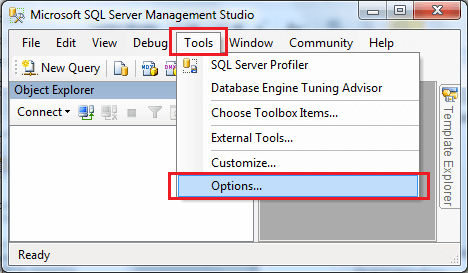
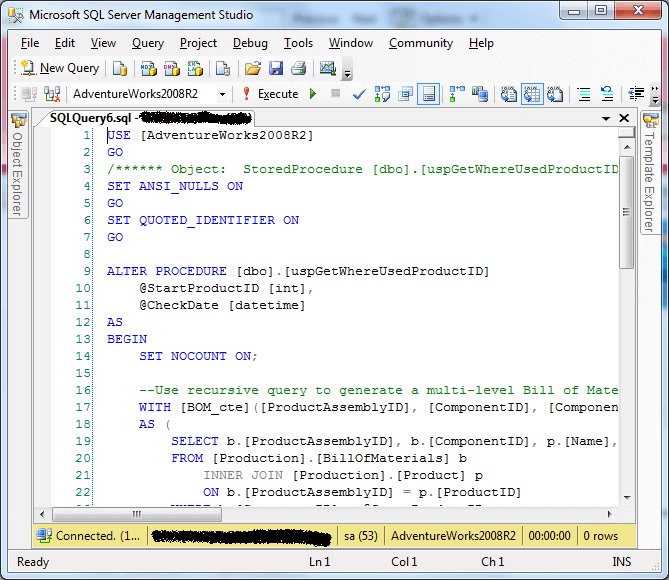


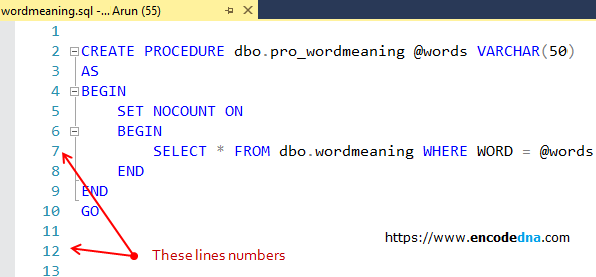


![Display Line Numbers in SQL Server Query Editor Window [HD] - YouTube Display Line Numbers In Sql Server Query Editor Window [Hd] - Youtube](https://i.ytimg.com/vi/SAp_mEa18HA/maxresdefault.jpg)
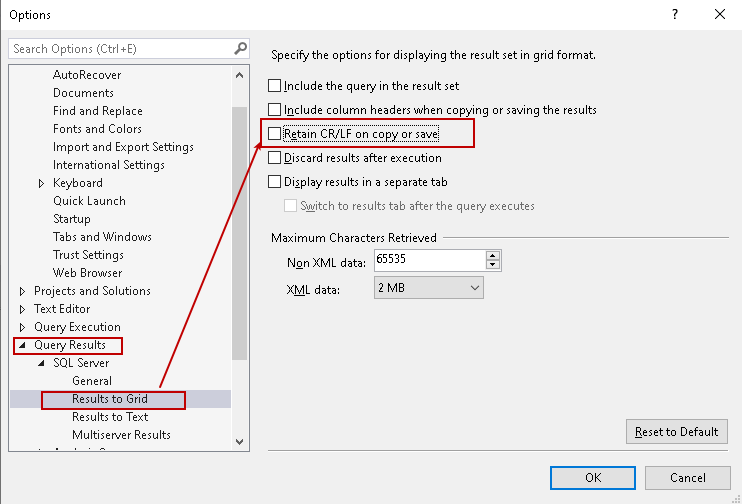

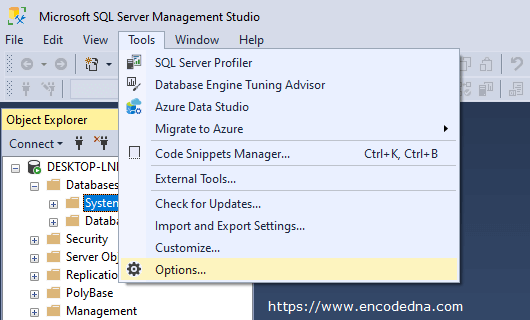




![SQL SERVER] Bật chức năng hiển thị số thứ tự dòng Code trong Sqlserver Management Studio Sql Server] Bật Chức Năng Hiển Thị Số Thứ Tự Dòng Code Trong Sqlserver Management Studio](https://laptrinhvb.net/uploads/baiviet/images/hien-thi-so-thu-tu-dong-code-sql-server(1).png)

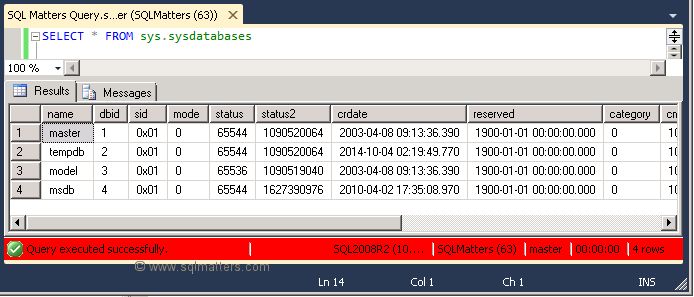








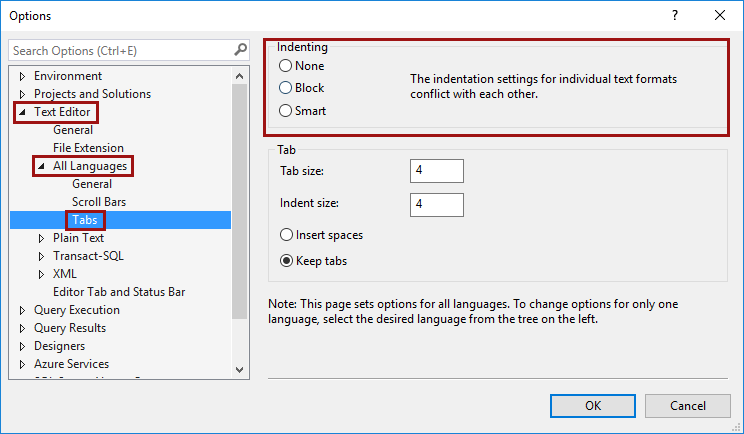
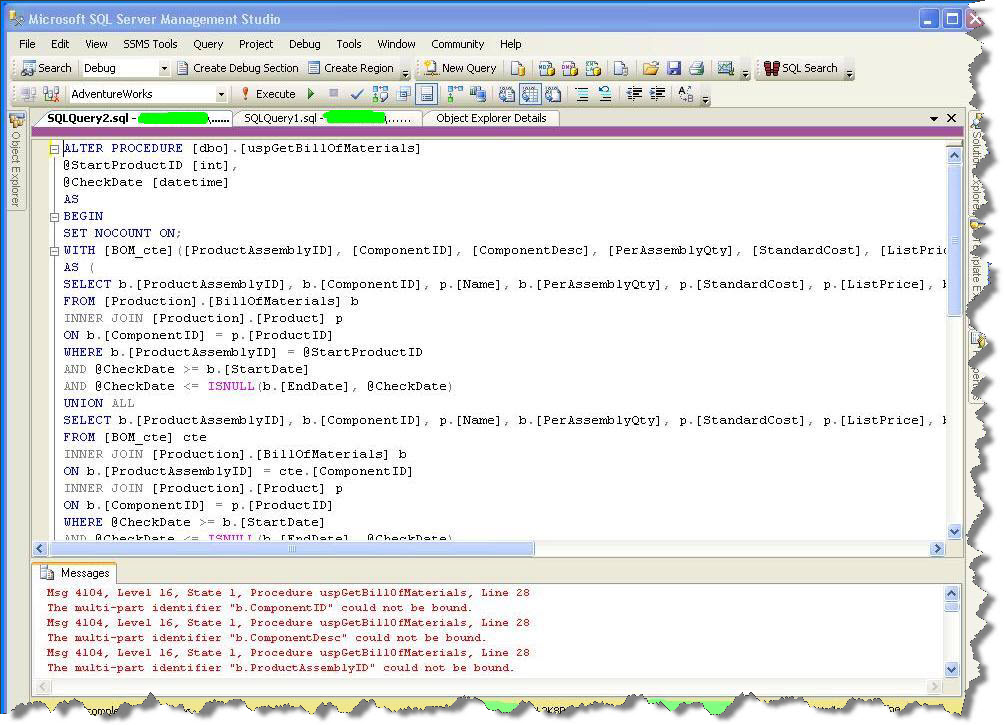
![SQL SERVER] Bật chức năng hiển thị số thứ tự dòng Code trong Sqlserver Management Studio Sql Server] Bật Chức Năng Hiển Thị Số Thứ Tự Dòng Code Trong Sqlserver Management Studio](https://laptrinhvb.net/uploads/baiviet/images/hien-thi-so-thu-tu-dong-code-sql-server(1).png)




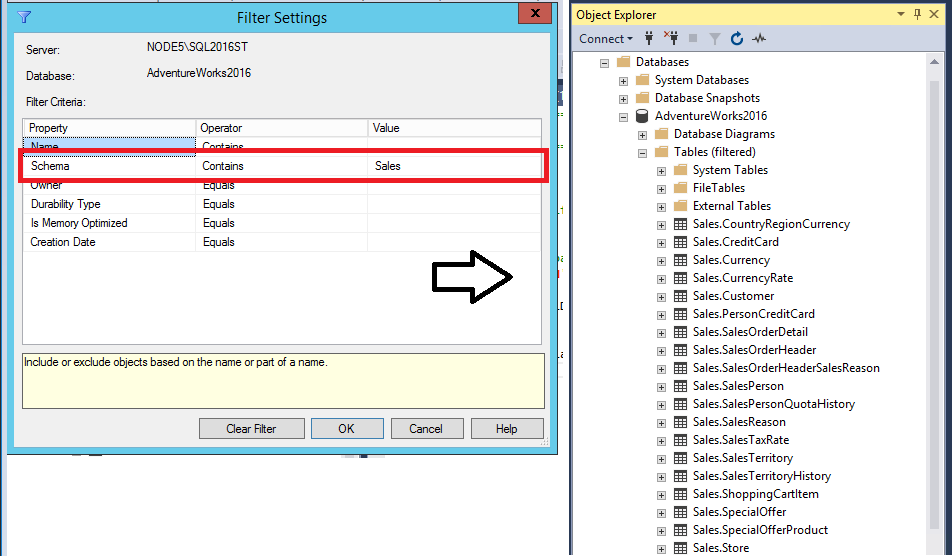

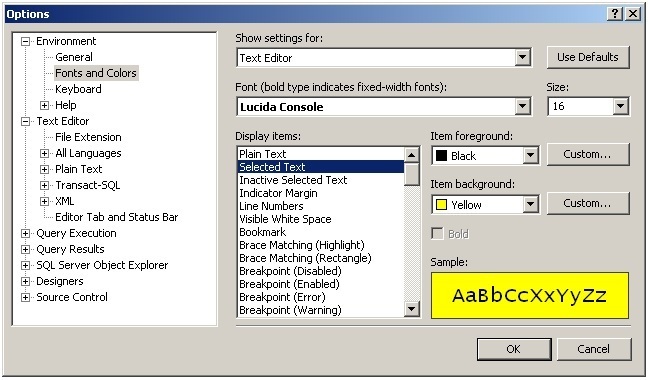
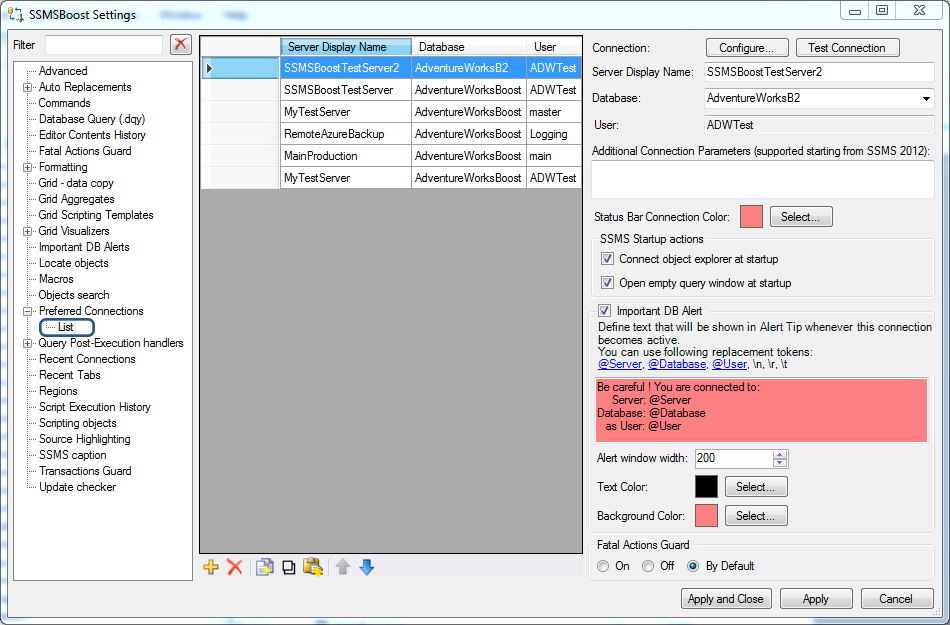
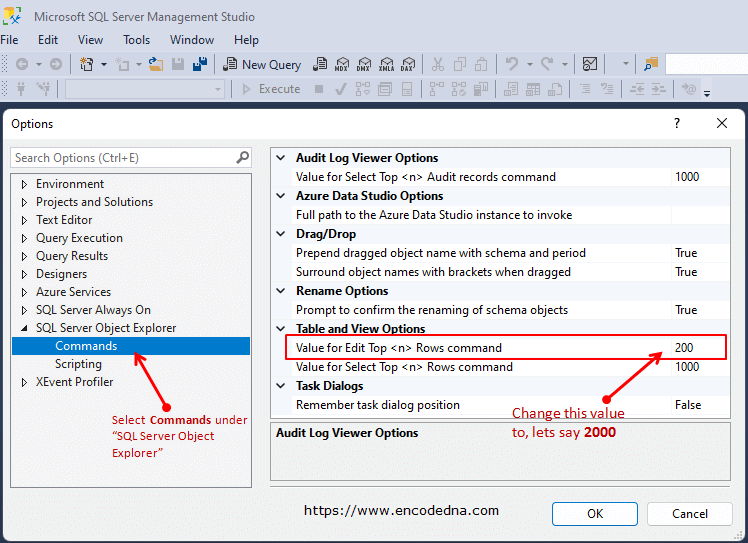


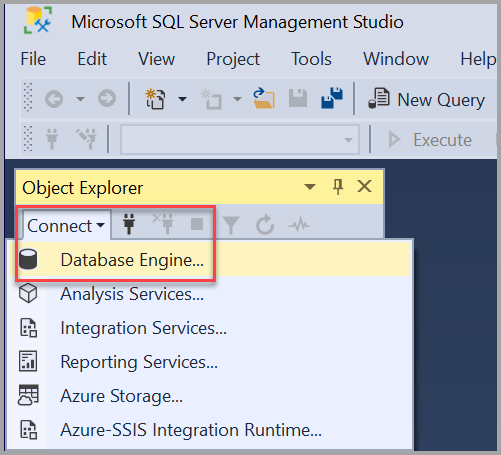
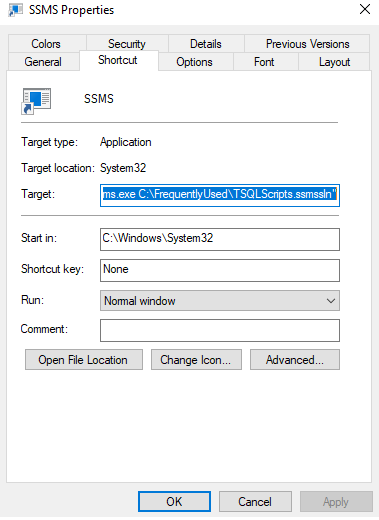

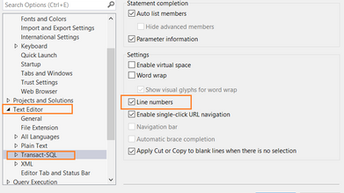


![SQL SERVER] Bật chức năng hiển thị số thứ tự dòng Code trong Sqlserver Management Studio Sql Server] Bật Chức Năng Hiển Thị Số Thứ Tự Dòng Code Trong Sqlserver Management Studio](https://laptrinhvb.net/uploads/baiviet/images/show_line_code_sqlserver.png)
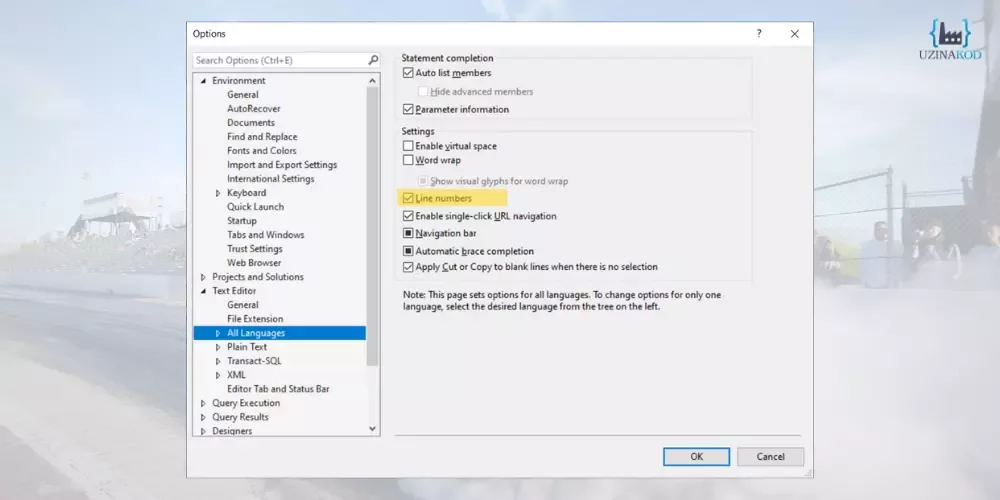
Article link: ssms show line numbers.
Learn more about the topic ssms show line numbers.
- Manage the Editor and View Mode – SQL Server Management …
- Display Line Numbers in a SQL Server Management Studio …
- How to enable line numbers in SQL Server Management …
- Showing or hide line numbers at SSMS with shortcut?
- Display Line Numbers in SQL Server Management Studio
- SSMS Line Numbers – SQLServerCentral
- SQL Server – Displaying line numbers in Query Editor – SSMS
See more: nhanvietluanvan.com/luat-hoc